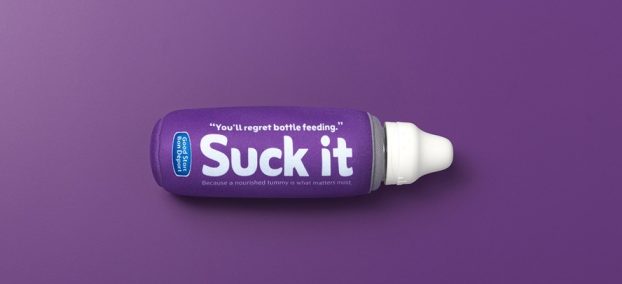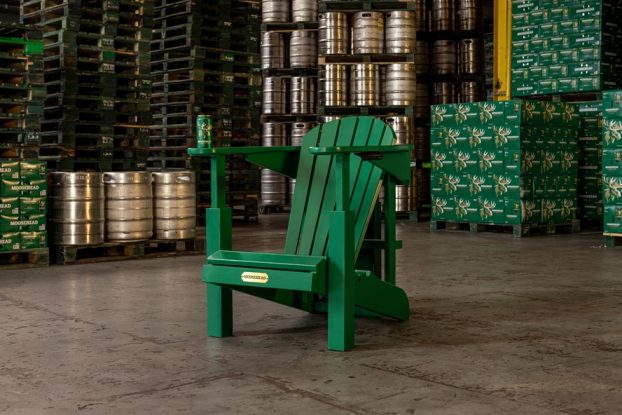Talk about a wobbly year: Many who ply their trade in the premiums and incentives industry saw their business shrivel up in tandem with the 2001 downdraft in the Canadian economy. For others, it seems last year was a licence to print money.
‘It was a very unsteady year,’ laments John Turner, president of Toronto-based C.T. Associates. ‘Even before Sept. 11, everybody was nervous. Now, they’ve climbed into a hole. They are saying we’re going to hold back [then] make a big splash this year. We can only hope that it’s true. But I worry that it could be a lot like last year. I think some companies will continue to do well, while others will be forced to shed staff.’
He’s not alone in his thinking. Indeed, if the soothsayers prove correct, 2002 holds many of the same promises – and pitfalls – that industry players saw in 2001.
Aaron Moscoe, president of The Promotional Specialists in Toronto, believes the industry may well undergo some consolidation this year. Less nimble players will fall by the wayside, he says, while those with innovative ideas will flourish despite tight marketing budgets.
‘Certainly some clients have cut back. But the mind-set for many brand-oriented companies is that when competitors are cutting back on marketing, it is a great time for them to invest in capturing market share,’ Moscoe says.
Death of the in-pack?
In this tepid economy, many marketers are sharpening their pencils and rethinking strategies in a bid to get the biggest bang for their buck. Among the emerging trends, according to the experts: Many marketers are beginning to overlook in- or on-pack premiums in favour of cross-promotions, sweeps and self-liquidating offers (SLOs).
Steve Smith, director of national merchandising at Molson Canada, says that pack-outs are extremely expensive to execute and may not necessarily be strong brand-builders. The same value can be realized through sweeps-style promotions at a drastically reduced cost, Smith argues.
It’s a shift that Andrew Bruce, EVP and chief operating officer of Publicis Canada, is also eyeing carefully.
‘We’re looking a lot more at strategic partnerships,’ he says. ‘I think we’ll see partnerships come to the forefront in a much bigger way in 2002.’
However, those who are more on the supply side believe that premiums aren’t dead yet.
Capital C Communications president Tony Chapman, for one, says that 2001 was a banner year for his company, and he expects business to remain brisk well into the next 12 months – and beyond.
‘As products get more and more similar, premiums are often the tie-breakers,’ Chapman says.
Moscoe is also a believer. He says that premiums are being seen more as a legitimate and effective part of the strategic marketing mix. Premiums are typically low-cost and offer unrivalled one-on-one direct opportunities, he argues, ensuring that they will continue to grow as a percentage of the total marketing dollars spent.
Less trash, more quality
Undoubtedly, the premiums and incentives market is continuing to mature. As marketers are able to gather increasingly sophisticated psychographic and demographic information about their customers, premiums and incentives will continue to become a more sophisticated marketing proposition, the industry gurus say.
That’s part of what’s fuelling the trend to higher-value premiums – sometimes distributed as SLOs – such as DVD players, digital cameras, and disposable cell phones. Such high-price premiums are typically offered with computers, cars and the like.
Volkswagen’s recent $500 Roots gift certificate offer, Toronto-based Holt Renfrew’s private shopping gala night (complete with $250 gift certificates), and the ubiquitous free printers, MP3 players and other electronics thrown in with new computers are all prime examples, says Chapman.
Linda Gallant, business development and marketing manager at Pickering, Ont.-based Somcan Marketing and Sales, has also witnessed an upscale trend. She says that her company saw a stunning uptick in demand for products at the higher end of the market while lower-end trinkets have all but dried up.
Somcan, which supplies brand-name products to the P&I industry, saw items such as Coleman stoves, Pelican kayaks, Casio watches and Zenith DVD players fly off the shelves this past year, she says. She expects that it will be much the same story in 2002.
‘Let’s face it: How many pens and mugs do you really need?’ Gallant asks. ‘If you reward your customer with something aspirational, chances are they’re not going to forget it.’
Looking to loyalty
Still, Gallant is among those who think that many marketers who traditionally used premiums in the past will march toward loyalty systems in the future – whether they be gas station loyalty cards or online and retail loyalty systems.
Steve Douglas, director of marketing and e-business at Sunoco in Toronto, agrees. He says that the gasoline retailing industry once relied heavily on promotional items to drive repeat purchases. These days, however, those sorts of promotions have almost entirely vanished.
‘Loyalty programs provide us with valuable customer information and allow us to more directly reward customer behaviours that are profitable to us,’ Douglas says.
The way he sees it, loyalty programs will continue to gain ground at the expense of the premiums industry in 2002 and beyond. In contrast to promotional items – which encourage transient customers who make one-time purchases – loyalty programs provide valuable data that allows marketers to build much more comprehensive customer profiles and a better understanding of purchase behaviours, Douglas says.
Air Canada is also betting its loyalty program will grow by leaps and bounds this year as big brand companies scour the landscape in search of strategic partnerships.
Brian Mullen, manager of strategic relationships and appreciation programs, says Air Canada’s Aeroplan program expects to make a litany of announcements about new alliances in the coming months. He says that rather than re-inventing the wheel, large marketers are increasingly taking advantage of existing programs, like Aeroplan, to build loyalty among customers.
With so many disparate trends currently underway in the premiums and incentives industry, it’s difficult to definitively declare which will dominate the coming year. Whatever happens, though, everyone agrees that it’s the players who keep an eye on these larger trends that will live to see 2003. Premium Picks for 2002
Tony Chapman, president
Capital C Communications
Toronto
Chapman says the hottest toys for teen boys will be anything electronic and high-tech – such as DVDs and video-games – as well as logoed sportswear.
For teenage girls, cell phones, movie passes, clothing and cosmetics will likely be the big lures.
For men, golf getaways are still all the rage. For women, premiums having to do with personal time – such as bowling passes, curling nights or gardening books – are likely to be coveted.
Rob Stonehewer, president
Rob Stonehewer & Associates
Burlington, Ont.
The under six set will continue to be bombarded by Thomas the Tank Engine, Lego, Hot Wheels and Matchbox
toys, says Stonehewer. Harry Potter and Lord of the Rings will be the hot properties among teenagers, as will mobile devices, including MP3 players, digital video cameras and accessories for cell phones.
For women, it’s all about pampering: personal concierge services, spas, and health & wellness products will be the premiums of choice.






















